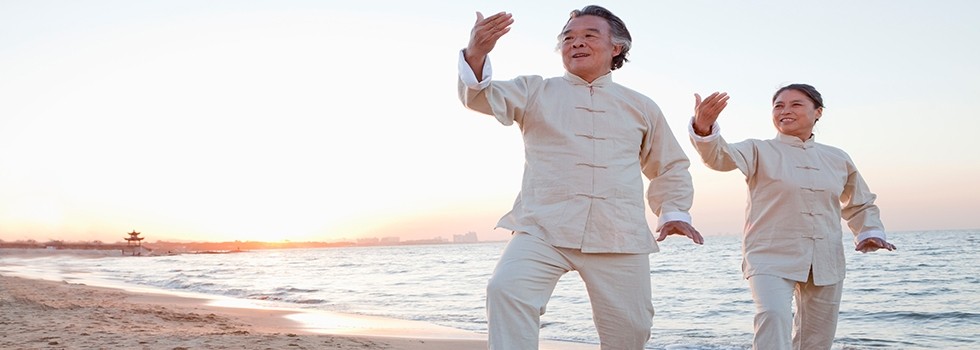Promotional Features
The age phenomenon: How demographic shifts are creating new health needs and opportunities
The world is in the early years of an unprecedented “age phenomenon” that will reshape societies. After centuries in which relatively few people lived past 60 years old, the number of people hitting that milestone is now rising rapidly. One result of the changes, and the accompanying increase in healthy lifespans, is the need to rethink the catch-all definition of seniors. A world with 2.1 billion people aged 60 and over will require more targeted definitions and approaches to healthy aging.
The age phenomenon is illustrated by historical data and future forecasts. From 1980 to 2017, the number of people aged 60 and over more than doubled. By 2050, the number is predicted to double again, resulting in there being more older people — 2.1 billion — than adolescents and youths[SJJ1] .
Rising standards of living around the world mean the demographic change is a global phenomenon but it is far more pronounced in some countries than others. Historically, the demographic shift was most closely associated with Western European countries. In 1980, countries in that part of the world occupied all the spots on the United Nations’ list of the 10 nations with the highest proportion of citizens aged 60 years or over. The situation is changing quickly, though.
By 2050, the United Nations forecasts that Asian countries will occupy several spots on the list. As in 2017, Japan is forecast to have the highest proportion of residents aged 60 years or over. Perhaps more surprisingly, China, Korea and Singapore are all in the top 10. More than two-fifths of people in these Asian countries are predicted to be aged 60 years or over. As recently as 1980, it was very rare for one-fifth of a population in any country to be aged 60 years or over.
The global and national forecasts provide a broad overview of how demographics will change but they mask shifts that are more granular but still important. Notably, the demographics within the over 60 group are changing rapidly. From 2017 to 2050, the number of people aged 80 years or over is forecast to triple. The 425 million people aged 80 years and older that are expected to be alive in 2050 will likely have very different needs than the 1.7 billion people aged 60 to 79 years old.
Probiotic manufacturers that understand these nuances will meet the needs of seniors and thereby build on the recent strong growth in demand for wellbeing and healthy aging products.
Identifying the needs of older people
To understand the diverse needs of seniors, DuPont Nutrition & Health conducted research in Japan, a country with a fast-aging population that serves as a bellwether for the rest of the world. In talking to Japanese men and women aged 60 years old and over in focus groups, the researchers found clear evidence of the diversity of the population. The DuPont findings show it is impossible to apply a one-size-fits-all approach to seniors, and identify four subgroups to facilitate targeted strategies.
The researchers grouped some of the people they interviewed into the “active lifestyle” subcategory. These people, most of whom are in their early 60s, started exercising and eating well-balanced, vegetable-based meals in response to concerns about their health. The lifestyle changes had positive effects on the health concerns, for example by decreasing their weight or cholesterol levels.
Despite addressing the health concern that prompted their actions, active lifestyle seniors still work to improve their health, for example by eating fermented foods, taking supplements to make up for nutritional gaps in their diets and trying to improve their immune systems, which can decline in old age due to the loss of beneficial bifidobacteria. The new lifestyle leaves people feeling positive and better connected to friends.
“Common active seniors,” the second group to emerge from the research, respond differently to the news that they have a health concern. These seniors, who are in their 60s and early 70s, know they need to exercise more and eat differently to improve their health. Common active seniors manage to make dietary changes, such as limiting carbohydrate consumption, and many women in the group take supplements. However, these people struggle to adopt regular, strenuous exercise regimes.
Active lifestyle and common active seniors are largely free from major physical and mental problems, and interact socially. The final two groups identified in the research — “frailty with mild symptom” and “frailty” — suffer more as a result of their age.
Seniors in the frail with mild symptom group either: feel tired, go days without leaving the house or urinate more than eight times in the day time. There is some divergence between the characteristics of men and women in this category but, broadly speaking, frail seniors with mild symptoms suffer some age-related deterioration, experience sleeplessness and have less social interactions than their peers in the first two groups. The age range covered by the category spans from early 60s to late 70s.
Frail seniors with mild symptoms eat more vegetables and yogurt — and avoid sugar, salt and fat — to try to improve their health. However, these seniors are prone to snacking between meals and late at night.
The final category of seniors — frailty — have more severe age-related conditions. The researchers split the frailty group into three subcategories that cover: people in their late 60s with deteriorating body functions; people in their late 60s to late 70s who are recovering from cancer and other serious conditions; and health-conscious people in their early 80s who are healthy for their age.
People in these subgroups have different health characteristics and approaches to the management of their wellbeing. They also share some key characteristics, though. Notably, all people assigned to the group either have dysphagia — a term for swallowing difficulties — or have experienced related problems, such as getting food stuck in their throat.
Developing products tailored to seniors
The diversity of health priorities identified by the research shows no one probiotic or supplement can meet the needs of the roughly 1 billion people aged over 60 alive today. To capture all of the market, manufacturers need to understand the specific needs of people in different groups — which are defined by multiple factors other than age — and design products tailored to these priorities.
DuPont can help companies develop such products. Having invested heavily to develop and validate its probiotic range, DuPont has a broad portfolio of products that have proven themselves in multiple randomized controlled clinical trials. The breadth of this portfolio enables DuPont to create formats tailored to the needs of specific populations of people.
The impact of DuPont’s investments are illustrated by the HOWARU® product line. This line features a number of probiotic strains, some of which have been formulated into products intended for use in seniors.
Recognizing that weight management is a top priority of active lifestyle and common active seniors, DuPont created a probiotic designed to help people control their weight and shape. A clinical trial of 225 people linked the probiotic formula, HOWARU® Shape, to reduced waist circumference and energy intake. The addition of a prebiotic, Litesse® Ultra™, was associated with increased lean body mass.
Another HOWARU® product, Protect Senior, meets the need for older people to improve their immune systems. The probiotic product addresses this priority, which is particularly common in active lifestyle seniors, by providing consumers with Bifidobacterium lactis HN019 to mitigate age-related changes to the composition of the gut microbiome. HN019 has shown its ability to improve immune function across six clinical trials, which also demonstrated its positive effects on colonic transit times.
HOWARU® Balance Plus expands on the effects of HOWARU® Protect Senior by adding Lactobacillus acidophilus NCFM® and the prebiotic fiber Litesse® polydextrose to the mix. The result is a product that features a ratio of bifidobacteria to lactobacilli tailored to the specific microflora of older adults, plus a source of fiber to aid digestion and ensure sustained fermentation throughout the gastrointestinal tract. Research suggests the combination boosts the immune system and aids digestive health.
DuPont provides these senior-focused probiotics alongside hydrocolloids that tailor the texture of foods and drinks to the needs of people with dysphagia, and high-quality proteins that help maintain muscle mass even if eating is difficult.
The breadth of senior-focused ingredients and products offered by DuPont is indicative of the diverse needs of older people. With some seniors living active lifestyles while others are frail and struggle to eat, there is no one-size-fits-all approach to nutrition. Instead, manufacturers need access to a wide range of ingredients that can be developed into customized formats that address regional health concerns.
DuPont’s unique and broad product portfolio positions it to help manufacturers tackle this challenge and thereby ensure older people have the probiotics and supplements they need to live long and age healthily.
For more information about DuPont Nutrition & Health’s capabilities, visit www.food.dupont.com.



